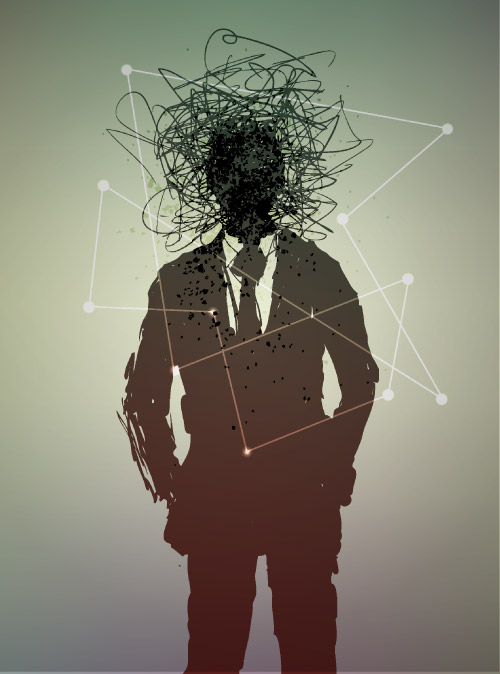Neurobiology, PTSD, and Hope

SGB. I just saw the 60 minutes story on SGB as a possible treatment for PTSD. SGB stands for Stellate Ganglion Block. Ganglion simply means a bundle of nerve fibers. We have numerous ganglia in our bodies. The Stellate ganglion is different and offers a potentially serendipitous treatment option for posttraumatic stress disorder (PTSD) that heretofore has been refractory to conventional psychiatric therapy. If so, these 3 letters may offer hope to thousands of law enforcement officers and even more returning military veterans who experience the symptoms of PTSD. The availability of the SGB procedure for law enforcement is unknown – I have seen no studies involving members of law enforcement. My hope is to bring the protocol to the fore front by starting the dialogue in these pages. By now, thousands of interested clinicians, physicians, and patients who are diagnosed with PTSD and those who should be diagnosed with PTSD have seen the compelling case for SGB.
The use of a small amount of anesthesia provides a risk free blockade of the autonomic nervous system overflow that contributes to the toxic levels of anxiety and stress among people with PTSD. This elevated arousal puts them on high alert. All the time on high alert. It is hard to function when the body signals the brain that a threat exists around every corner – whether on duty or off. This is the enduring problem when LEO’s are exposed to threat after threat without chance to defuse. Currently only 12 of the 172 V.A. hospitals offer this treatment but it has gone into clinical trials to determine its true efficacy versus placebo according to the 60 Minutes story broadcast 6-17-19. The sympathetic system activates the bodies internal survival mechanism by raising the threat level needed to fight or to flee. It is almost instantaneous. The fight/flight mechanism exists in all animals having an evolutionary value needed for survival and defense against potential prey. “Stellate ganglion has been demonstrated to have second and third order neurons connections with the central nervous system nuclei that modulate body temperature, neuropathic pain, the manifestations of PTSD, and many other areas.” Lipov, et al. (2009). I am no expert but a risk-free protocol to break the neurobiologic underpinning of PTSD is something I would try if I needed to. It has been used for conditions such as chronic pain, migraine headaches, upper extremity pain, and symptoms of menopause in women. Only recently has it been shown to relieve the suffering of people with this debilitating and chronic condition. However, a study by Hanling et al (2016) was equivocal in its report that the SGB was no more effective than a Sham injection. This seems like a set back for this hopeful treatment. Other studies have emerged that support the utility of SGB for PTSD including the Peterson et al. paper published in 2017. Findings from a case series of 30 active-duty military service members with combat-related PTSD suggest that people with predominantly hyperarousal and avoidance types of symptoms may be more likely to benefit from SGB according to Lynch et al. in 2016.“These nerves help control the brain’s fight or flight reactions, signals that go haywire with PTSD.” 60 Minutes CBS News 6-17-2019
REFERENCES
American Psychiatric Association. Diagnostic and statistical manual of mental disorders (DSM-5®). American Psychiatric Pub; 2013. Hanling SR, Hickey A, Lesnik I, et al (2016) Stellate Ganglion Block for the Treatment of Posttraumatic Stress Disorder: A Randomized, Double-Blind, Controlled Trial Regional Anesthesia & Pain Medicine; 41:494-500. Peterson, K, Bourne, D, Anderson, J, Mackey, K, and Helfand, M. (2016) Evidence Brief: Effectiveness of Stellate Ganglion Block for Treatment of Posttraumatic Stress Disorder (PTSD). https://www.ncbi.nlm.nih.gov/books/NBK442253/#vaganglionblock.s25 Taken June 17, 2019 Lynch JH, Mulvaney SW, Kim EH, de Leeuw JB, Schroeder MJ, Kane SF. (2016) Effect of Stellate Ganglion Block on Specific Symptom Clusters for Treatment of Post-Traumatic Stress Disorder. Military Medicine. Sep; 181(9):1135–1141.Evidence Brief: Effectiveness of Stellate Ganglion Block for Treatment of Posttraumatic Stress Disorder (PTSD)Lipov, E, Joshi, J, Sanders, S, Slavin, K. (2009) A unifying theory linking the prolonged efficacy of the stellate ganglion block for the treatment of chronic regional pain syndrome (CRPS), hot flashes, and posttraumatic stress disorder (PTSD). Medical Hypothesis. Volume 72, Issue 6, June 2009, Pages 657-661 https://www.sciencedirect.com/science/article/abs/pii/S0306987709000413?via%3Dihub American Psychiatric Association. Diagnostic and statistical manual of mental disorders (DSM-5®). American Psychiatric Pub; 2013. Sefton, M. (2019) The Neurobiology of police work. Linkedin publication: https://www.linkedin.com/pulse/neurobiology-police-work-michael-sefton-ph-d-/ Taken June 17, 2019 Hanling SR, Hickey A, Lesnik I, et al (2016) Stellate Ganglion Block for the Treatment of Posttraumatic Stress Disorder: A Randomized, Double-Blind, Controlled Trial Regional Anesthesia & Pain Medicine; 41:494-500. Peterson, K, Bourne, D, Anderson, J, Mackey, K, and Helfand, M. (2016) Lynch JH, Mulvaney SW, Kim EH, de Leeuw JB, Schroeder MJ, Kane SF. (2016) Effect of Stellate Ganglion Block on Specific Symptom Clusters for Treatment of Post-Traumatic Stress Disorder. Military Medicine. Sep; 181(9):1135–1141.
van Rooij SJ, Kennis M, Vink M, Geuze E. Predicting Treatment Outcome in PTSD: A Longitudinal Functional MRI Study on Trauma-Unrelated Emotional Processing. Neuropsychopharmacology: official publication of the American College of Neuropsychopharmacology. Mar 2016;41(4):1156–1165.
[…] saw the 60 minutes story on SGB a year or two ago as a possible treatment for refractory PTSD. Many patients now matter how many […]